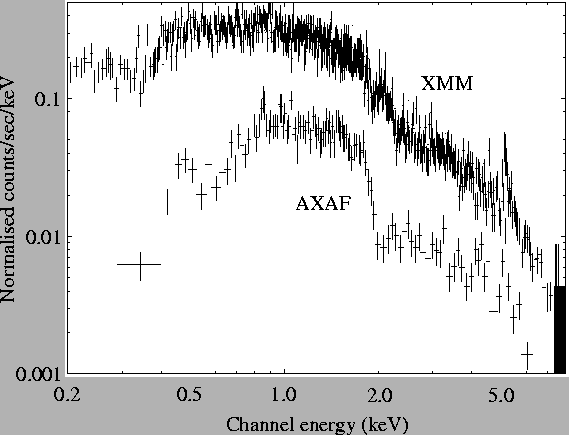 |
For illustrative purposes, we add here a direct comparison of an XMM EPIC and an AXAF ACIS-I observation of a cluster with a 6 keV thermal plasma spectrum, 0.3 solar metallicity, a redshift of 0.3 and an X-ray flux in the 0.1-10 keV band of 10-12 erg cm-2 s-1 (thus a fairly luminous system). Such a comparison gives a good feel for the capabilities of both instruments for performing studies of faint objects. We simulated the response of the AXAF ACIS front-illuminated CCD imaging instrument, using the response matrices supplied for the guest observer proposal submission. With a 30 ksec observation ACIS is able to measure the temperature of the cluster to about 10% accuracy (assuming only poissonian noise and neglecting systematic effects).
 |
For comparison, we simulated (using SciSim) the combined response of the 3 EPIC focal plane cameras on XMM, using the same input spectrum and observing time. Using a preliminary response matrix for EPIC, we estimate a temperature measurement accuracy of order 2.5% (neglecting systematic effects).